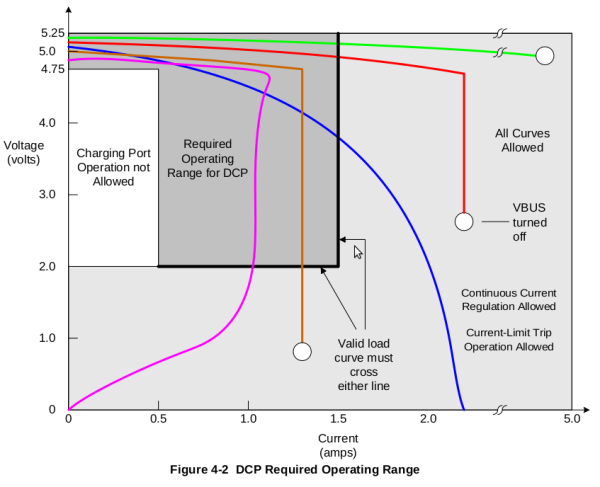As we help customers design products, we often try to leverage the latest cell phone practices and technologies. One of these is USB charging. There has been a push in recent years to standardize on USB chargers for cell-phones. There are a number of organizations involved including the USB-IF and OMTP. Two of the specification available include:
- http://internal.omtp.org/Lists/ReqPublications/Attachments/59/OMTP CCLDC V1.1 Final.pdf
- http://www.usb.org/developers/devclass_docs/Battery_Charging_V1_2.zip
There is also a Chinese standard titled the “Telecommunications Industry Standard of the PRC” that has been instrumental in influencing these standards.
The fundamental problem is a battery powered device needs to know if it is plugged into a computer USB port, or a dedicated charger. A standard USB port on a computer is only specified to provide 500mA. Typically a dedicated charger that plugs into a wall outlet provides more current than 500mA so that the battery can be charged quicker. To differentiate between a computer USB port, and a dedicated charger, the dedicated charger shorts the D+ and D- USB signals together with a resistance of less than 200 ohms (specified by USB-IF).
One of the goals of these standards is that any charger can be used with any battery powered device. The next question is how do we handle the case where every USB charger has a different rated current? How can a device that charges its battery at 1.7A be compatible with a charger that only outputs 0.7A? One theoretical solution would be for the device to query the current capacity of the charger and then only use that much current. It turns out a much simpler approach is used. The USB-IF provides the following chart in the above specification:

As long as the charger outputs power in the Required Operating Range, the battery powered device must be able to use whatever power is available to charge its battery. If the device uses more current than the charger can supply, the charger simply goes into a constant current mode and the battery charges slower than it would with a higher capacity charger. Thus we have a very simple scheme where we can theoretically use any charger with any device.
As a simple test, I charged a Nokia N900 phone (which came with a 1.2A charger) with a smaller LG charger that is rated for 0.7A. I monitored the LG charger a couple times during charging to make sure it was not getting hot. It seemed to charge the N900 battery just fine.
When purchasing after-market USB chargers, it is sometimes difficult to determine if they have the USB D+ and D- lines shorted together. In once case I purchased a car USB charger that did not work with my phones, but was able to “fix” it by disassembling it, and putting a solder blob between the D+ and D- signals on the USB connector.
While shorting the D+ and D- pins usually makes a charger work, it is nice to know if the charger is compliant with the USB-IF specification and is designed to work in the constant current mode without shutting down, catching fire, etc.


